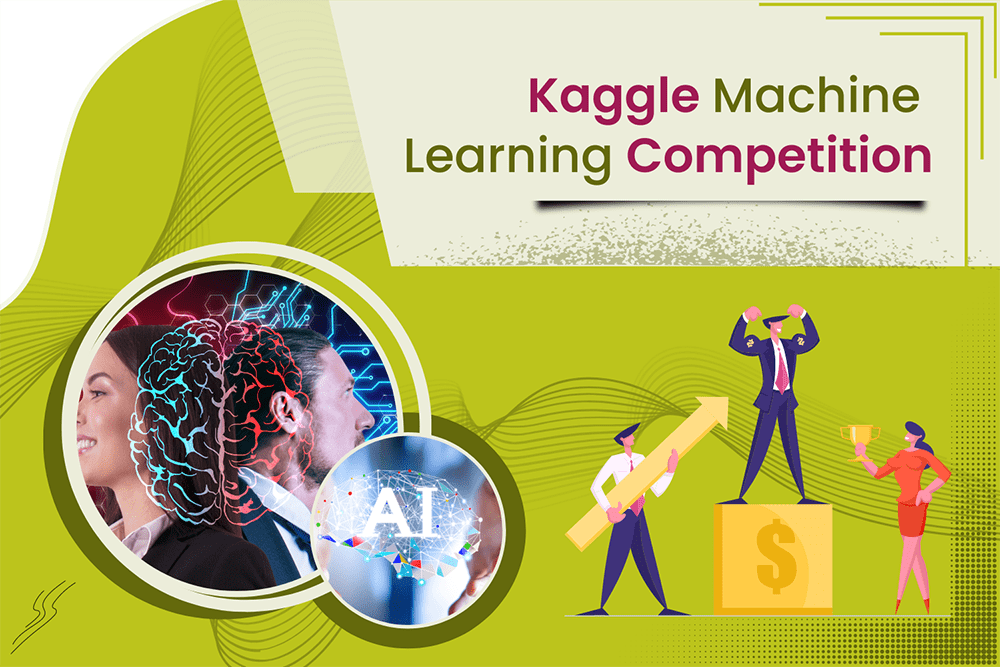Kaggle is the most well-known website for machine learning competitions. A Kaggle competition consists of a dataset made public on the internet and a task to answer using machine learning, deep learning, or another data science approach. Once you’ve devised a solution, you put your predictions back onto the site and, depending on the effectiveness of your solution, you’ll win a spot on the competition’s leaderboard and potentially even a cash reward. In this article, how to participate in an Kaggle competition is explained.
Kaggle contests are machine learning assignments developed by Kaggle or other organisations such as Google or WHO. You can win real money if you compete effectively.
Competitions vary in terms of problem kind and difficulty. Even if you’re a newbie, you can participate in one. Advanced contests, on the other hand, are far more exciting, and a first-place finish in a competition is an excellent addition to your machine learning engineer CV.
Before moving towards learning How to participate in Kaggle competition, lets learn about the formats of competitions on Kaggle.
3 formats of competition on Kaggle are as follows:
Simple Competitions
These are typical Kaggle tournaments. You gather data, create a model, and submit it. The hosts of the tournament then review your findings and assign you a score on the scoreboard. This is the format used by the vast majority of Kaggle contests.
Two-Stage Competitions
Every task in a two-stage tournament contains two sections. Stage 2 introduces a fresh test dataset at the start of the stage. To gain access, you must first complete level 1. To be successful in such competitions, you must carefully study the regulations and keep an eye on the deadline.
Code Competitions
Submissions for coding contests are made from inside a Kaggle Notebook (we explain later on what it is). In some ways, these tournaments are fairer because all users are using the same gear. Code contests may impose restrictions on the Notebooks you may submit, such as CPU or GPU runtime, the ability to utilize external data, and internet connectivity. Reading the regulations is also very crucial here.
Everyone competes in teams of one or more persons in Kaggle contests. Every team need a team leader. You may invite your friends or join a team of other people in the competition by going to the Team page. If you find that submitting a model on your own is too difficult, your team can join with another team. You may, however, only do so until a particular date.
How to use Kaggle to Compete?
As a beginner, once you register and get familiar with the Kaggle’s interface, you can go on to the “Compete” tab.
Select the Titanic competition. All newly enrolled users are asked to take part in a short tournament to learn more about Kaggle. It is not an issue if you do not know how to code.
You must apply machine learning to construct a model that predicts which passengers survived the Titanic shipwreck in the Titanic competition. Using variables such as name, age, gender, and socioeconomic status, you are expected to create a prediction model that answers the question, “which passengers were more likely to survive?”
Every competition features the following tabs:
- In Data, the datasets for training and testing your model may be found.
- Notebooks are your working environment. They include tutorials, blog entries, and documentation. They can also run code without requiring you to install anything.
- In Discussion, you may speak with other competition participants, ask questions, and offer advice.
- The Leaderboard displays the competition competitors’ scores.
- Additional datasets provided by participants are included in the
- Finally, Rules contains the competition’s rules.
To enter the competition, click Join the Competition.
Making the first Submission:
- Download the data: Scroll and download all the data
- Read the Rules: Check on the given competition rules on the data usage. You must obey the guidelines to avoid getting disqualified, especially in competitions run by third-party organisations.
- Study the open Kernels: You may go through other people’s public notebooks to see how they solved the challenge. Simply navigate to the Notebook tab in the competition. It is undoubtedly beneficial to examine the greatest examples that made it to the top 1% to 3%. Solutions that did not win are also useful since they may be inspected to see what needs to be improved.
- Create your kernel: Kaggle Kernels allows you to create models. This configurable Jupyter Notebooks environment with free GPUs is quite easy; it comes with pre-installed libraries and lets you to build a CVS prediction file for submission. Go to the Notebooks tab and select New Notebook to create your own Kernel. Simply select Add Data -> Competition Data -> Add to easily add your Data to the submission. There is no need to upload anything.
- If you collaborate with others, you can quickly share your Notebook with them by clicking the Share button. You may use the Notebook to flip between multiple versions of the submission and safely preserve them. You can write up to 20GB to the saved directory.
- Make a submission: Kaggle submissions are in CSV format and typically include two columns: an ID column and a prediction column. Upload your entry and obtain an accuracy score.
- Check the leaderboard: Check out where your model ranks on the scoreboard. You can win a gold, silver, or bronze medal, which will boost your platform reputation. It is possible to win large sums of money in advanced competitions.
- Improve your Score: It is typically feasible to raise your score and move up the scoreboard. To learn and grow, read conversations, ask questions, and gain insights from other competitors.
Thus, in this article how to participate in Kaggle Competition is explained!!


